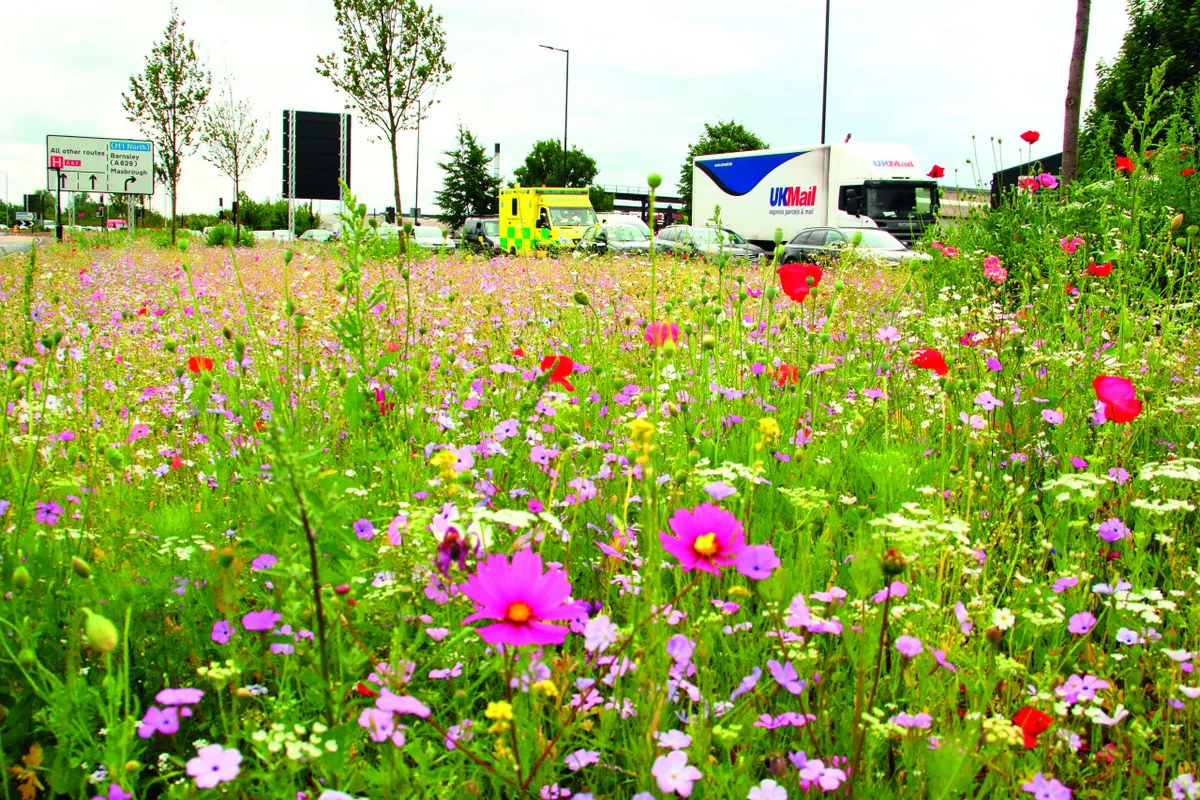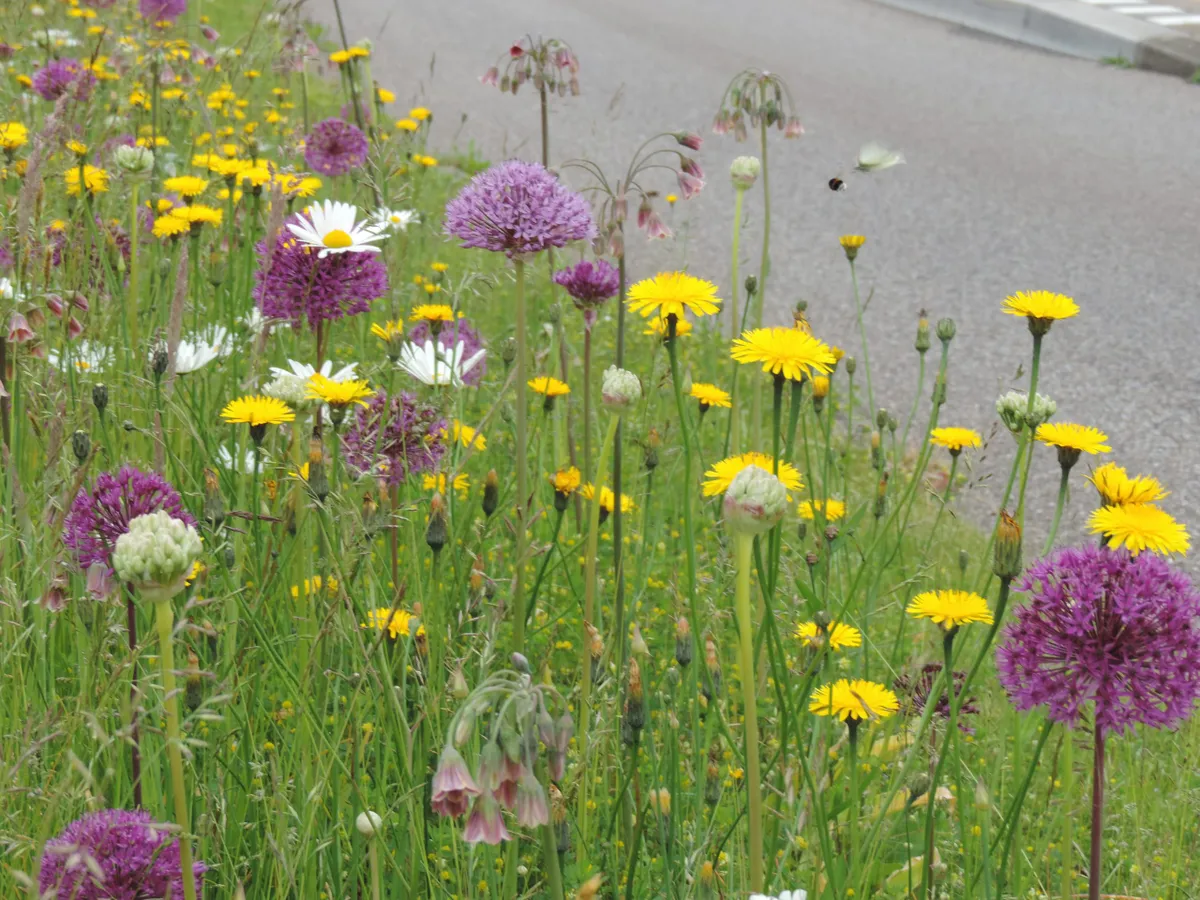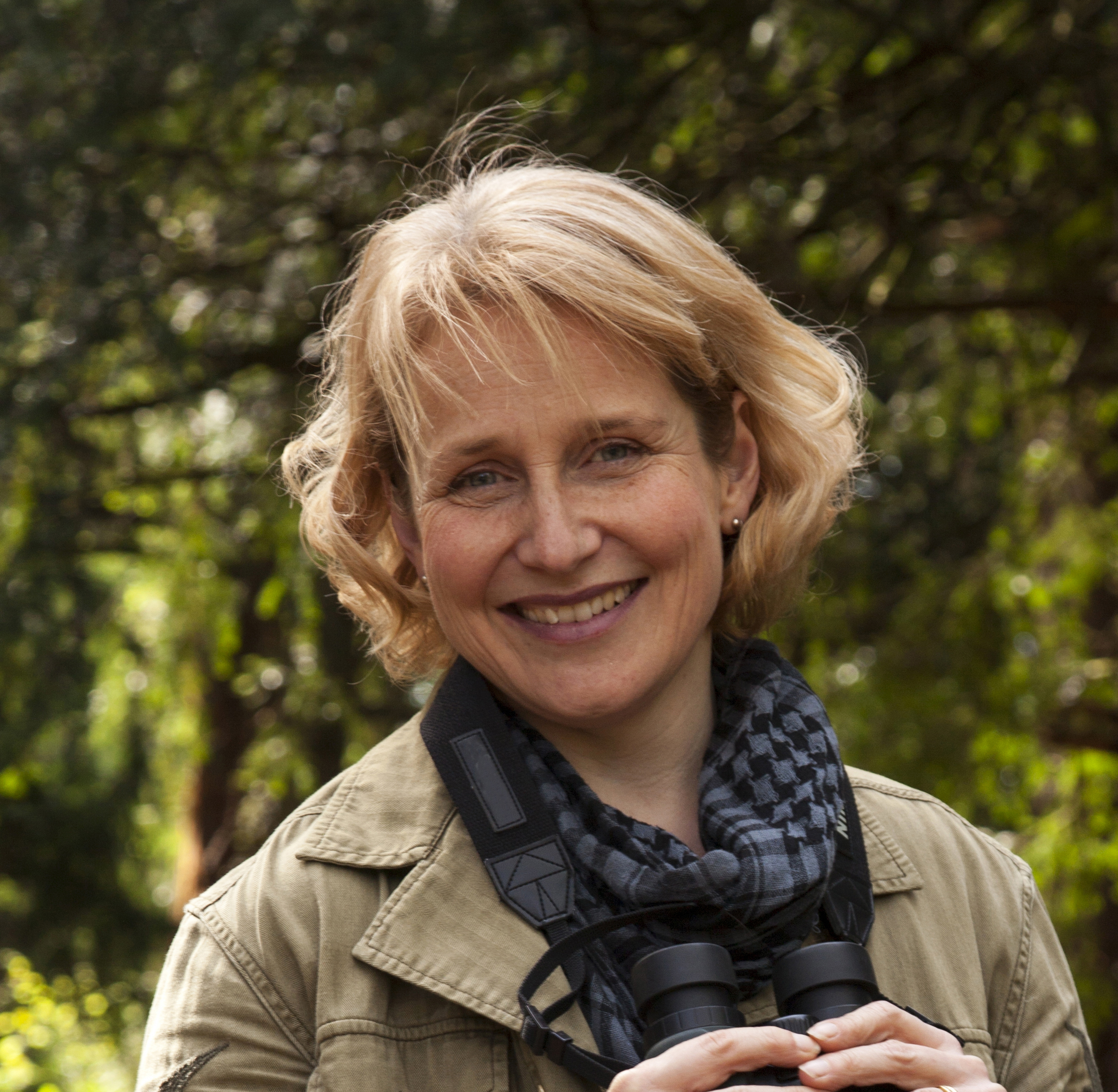There’s a grim and oft- repeated statistic: since the 1930s, our traditional wildflower meadows have declined by 97 per cent, pushing many grassland species to the verge of extinction. So, while Britain may still be largely green, it is not nearly so pleasant – for wildlife or wildlife lovers.
Meanwhile, the botanical conservation charity Plantlife estimates that the 500,000km of rural road verge in the UK is equivalent in area to roughly half the remaining flower-rich grassland and meadow in the country.
It points out that these ubiquitous strips of habitat could be important refuges for a huge range of familiar and rare native plants and the diverse animal communities they support, including beleaguered butterflies and vital pollinators, not to mention bats and birds.
Learn more about planting for wildlife:
Advocates for nature have long bemoaned a needless obsession with tidiness and clumsy management of verges by poorly trained contractors. It is perhaps understandable that the interests of wildlife come a poor third to considerations of road safety and budget.
Driver sightlines are of paramount importance, and for cash- strapped local authorities lacking in time and expertise, it’s not surprising that maintenance regimes are often far from sensitive, involving regular mowing and dousing with herbicides, in most cases.
But now ecologists have a new concern over verge management – and, at first glance, it seems a surprising one. An explosion of colour along roadsides in several UK cities last summer was replicated in the media, with the riotous displays – often in otherwise unprepossessing locations – described as ‘wildflower meadows’. They were widely celebrated for their powerful visual impact and the resource they provide to pollinating insects.
A 13km-long stretch through Rotherham in Yorkshire has attracted particular attention, despite having been in place for more than six years.
“People call it the river of flowers,” says councillor Sarah Green, who holds the city’s portfolio for Cleaner, Greener Communities. “The road is a gateway to the city, and the change has been a fabulous thing, which people have really got behind. It’s provided a much-needed source of nectar for pollinators and has created an uplifting spectacle.”

It sounds like the ultimate win-win, but not everyone is thrilled. “Some people think we’ve only done it so we don’t have to cut the grass,” says councillor Green, “and that’s partly true. The idea came from the Highways Department. The mowing they used to do meant regular weekend road closures and cost around £80,000 a year. The river of flowers is saving about £25,000 of that.”
Unnatural selection
That the scheme started as a cost-saving measure might be telling, given that more specific criticism comes from ecologists. Joshua Styles, project co-ordinator of the North-West Rare Plant Initiative, is one such critic, and his concerns are threefold. Firstly, the mix of species shows these displays are anything but natural and contain lots of non-native species.
“While these may be good for a few general pollinators, they support far fewer invertebrates than natural, native verges,” says Styles. “History has taught us that introducing non-natives is not a good idea,” he adds.
Secondly, most of the sown plants are arable weeds, which need to fall on bare soil in order to establish. So, the process of creating the display involves the wholesale destruction of existing vegetation, usually by spraying with a broad-spectrum herbicide, such as glyphosate.
“Finally, the message these mixes portray is that this is what a wildflower meadow should look like, and what that does is encourage people to sow the same sort of mix elsewhere,” Styles says. “It’s worrying that anyone can buy something sold as a ‘wildflower mix’ and spread it where they like. Councils are often doing this at scale without any kind of ecological survey first to see what natives might be disadvantaged or even crowded out.”
Pros and cons
Native verges may be less showy than sown meadows, but natural seed banks can produce astounding diversity and botanical gems.
Sown verges, if carefully planned, have the advantage of long, continuous flowering and bespoke, impactful colour schemes. On the downside, non-native plants may not be as attractive to pollinators or provide food for larvae, there is a small risk that some may become invasive, and mixes based on arable weeds require the destruction of existing vegetation every year.
Natural verges, managed sensitively, can be extraordinarily diverse and ecologically complex, and support specialist plants adapted to local conditions. However, they are less predictable, less showy, may take a few years to develop, may have gaps in flowering and suffer from the perception that they are untidy.
Photo: Wildflowers on a road verge in Northern Ireland. © Matt Pitts/Plantlife
The Rotherham river of flowers is the product of a bespoke seed mix, produced by Pictorial Meadows, a Sheffield-based company that also supplies many other councils and was responsible for the much-admired display at the Queen Elizabeth Olympic Park in London. Marketing strategist Sam Holloway says the company goes to great lengths to get each mix right.
“It takes about five years to perfect a mix – we want to ensure continuity of flowering so that pollinators gain maximum benefit and you get a nice succession of colour, which changes to maintain visual impact throughout the flowering period,” Holloway says.
He goes on to explain that the chosen species are unlikely to become invasive precisely because they are cleared every year or two, and are easily crowed out by subsequent growth should the seeds fall elsewhere.

Joshua Styles concedes that a sown meadow is better ecologically than the bedding displays beloved of Victorian parks, seafront promenades and ‘Britain in Bloom’ contenders – truckloads of garish nursery- grown specimens wheeled in for a few weeks and removed as soon as they fade. Not only are such schemes a bit ‘try-hard’ for modern tastes, they incur huge financial and labour costs, and offer little value to pollinators.
Floral displays
Wildflower mixes, Styles recognises, even non-native ones, symbolise something else: a desire for wildness, a hand of friendship extended to nature. That councils and the public want to help pollinators is clearly a positive thing.
But while a border of lurid primulas around a bowling green is not purporting to be natural, an urban ‘meadow’ is easily misrepresented as a solution to the decline in native wildflower meadows.
So, why use non-natives at all? Plenty of native wildflower species, or long- established introductions (known as archaeophytes) such as common poppy, larkspur and corn marigold, can put on displays showy enough for anyone.
“We do produce native mixes,” says Holloway, “but they’re not as appealing to councils, because they don’t flower for as long, and can end up looking a bit, well, scruffy.”
Just as unmown is still often regarded as unkempt, long vegetation and dried seed heads are perceived as untidy, despite their wildlife value.
Learn more about identifying flowers:
Not all Pictorial Meadows products require annual clearing. The company has also developed perennial meadow, sold as turf. This doesn’t need sowing every year but also includes non- natives, for the same reasons of aesthetic and continuity of display.
Meanwhile, the alternative approach advocated by Plantlife respects the botanical character of an area, emphasising that it’s actually rather easy and cost effective to allow native flora to flourish on verges by cutting later and cutting less. This was the simple message of the road verge campaign launched by the charity in 2013. But the result is less instantaneous than a sown display and arguably a subtler spectacle – especially from the perspective of passing motorists.

It seems that local councils lack the expertise to know what such a meadow would look like, and easily succumb to public pressure to either put on a show or be tidy. The same lack of ecological understanding has undoubtedly led to some appalling cases of verge mismanagement.
In April 2019, a verge managed as a roadside nature reserve by Kent Wildlife Trust was scraped by contractors carrying out drainage work, destroying an estimated 17,000 orchids in one day.
Wiltshire County Council came in for heavy criticism on social media when it released pictures of the work of so called ‘sparkle teams’, stripping wildflowers from pavement cracks and wall crevices in Bradford on Avon. You don’t have to look far for multiple examples of mowing verges in full flower, or flailing hedges during the nesting season.
Promoting pollinators
In Rotherham, the policy is to cut the first metre of grassy verge to protect drivers’ sightlines, and leave the rest – only cutting the whole strip at the end of the year. The city’s pollinator scheme is being extended, too. “We have made planting for pollinators a main theme of our Street Pride Services programme,” says councillor Green.
“We’ve instigated pollinator-friendly planting on green spaces around our properties; our landscape- design team now offers guidance to people and organisations considering planning applications; and the annual garden competition for council tenants now includes a category for the most pollinator-friendly patch.”

So, the solution may be in education – helping the public to appreciate native wildflowers as components of the particular places where they grow, and councils and contactors to understand how to manage verge habitats appropriately.
Rather than deride attempts to improve things, the best policy for concerned ecologists may be to recognise the intent, allow some slack in urban settings, where a more horticultural approach is perhaps not such a bad thing, and focus instead on the rural situation.
Sensitively managed rural verges might become a species-saving nationwide network of refuges for our precious wild flora.
Main image: An urban wildflower meadow on Park Square roundabout in the centre of the city of Sheffield, Yorkshire. © Matthew Taylor/Alamy
